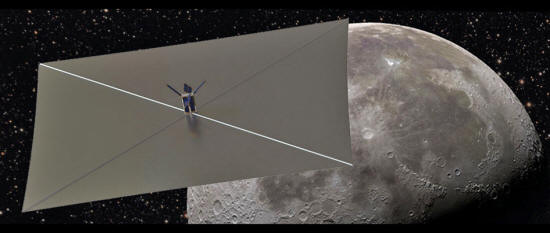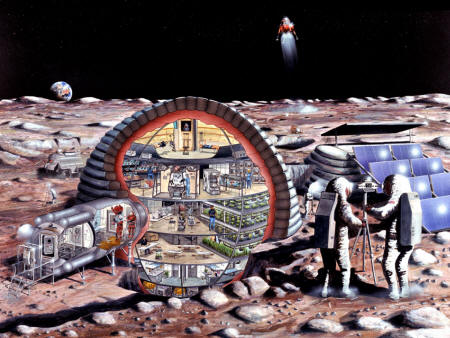|
from Space Website
There's a lot of water on the moon, and NASA wants to learn how to mine it.
Space agency scientists are developing two separate mission concepts to assess, and learn how to exploit, stores of water ice on the moon and other lunar resources.
The projects - called Lunar Flashlight and the Resource Prospector Mission - are notionally targeted to blast off in 2017 and 2018, respectively, and aim to help humanity extend its footprint out into the solar system.
It's therefore important to,
...Barbara Cohen said in July during a presentation at the NASA Exploration Science Forum, a conference organized by the Solar System Exploration Research Virtual Institute at the agency's Ames Research Center in Moffett Field, California.
Solar sailing to the moon
Lunar Flashlight is working toward a possible launch date in December 2017, when it would blast off on the first test flight of NASA's Space Launch System megarocket (below Infographic), along with several other piggybacking payloads:
Lunar Flashlight is a CubeSat mission, meaning the body of the spacecraft is tiny - about the size of a cereal box, Cohen said.
But after it's deployed in space, the probe would get much bigger by unfurling an 860-square-foot (80 square meters) solar sail.
The spacecraft would then cruise toward the moon on a circuitous route, propelled along by the photons streaming from the sun. Lunar Flashlight would start orbiting the moon about six months after its launch, then spend another year spiraling down to get about 12 miles (20 kilometers) from the lunar surface.
The probe would then make about 80 passes around the Moon at this low altitude, measuring and mapping deposits of water ice in permanently shadowed craters near the lunar poles. It would do this science work with the aid of its solar sail.
Lunar Flashlight aims to find water ice that would be accessible to future explorers, be they human or robotic.
Such deposits could provide drinking water for potential manned lunar outposts.
And moon water could also be split into its constituent hydrogen and oxygen - prime components of rocket fuel, which could then spur and support exploration even farther afield, advocates of Moon mining say.
Space mining advocates envision lunar extraction of minerals and ice as near-term objectives. Credit: NASA
A water-mapping rover
While Lunar Flashlight would eye the moon from above, the Resource Prospector Mission (RPM) plans to send a rover onto the lunar surface to get an up-close look.
This rover would land at a yet-to-be-determined polar site and map surface and subsurface concentrations of hydrogen at two different locations, which would ideally be separated by at least 0.6 miles (1 km). RPM would use a neutron spectrometer to measure water concentrations up to 3.3 feet (1 m) underground and a near-infrared spectrometer to make its surface measurements.
The solar-powered rover would roll into permanently shadowed regions, relying on batteries to keep working in the dark. It would likely have an operational lifetime of about one week on the lunar surface, mission officials have said.
Like Lunar Flashlight, RPM is geared to help enable future exploitation of water ice on the moon.
The rover would also be equipped with a drill, allowing it to take samples from up to 3.3 feet (1 m) deep, Colaprete said.
Collected samples would be heated up in an oven, and the volatile materials such as water liberated by this process would be identified and quantified.
RPM also plans to extract oxygen from lunar dirt in a demonstration of in-situ resource utilization (ISRU). (This oxygen can be combined with hydrogen carried onboard to create water.)
Mars is one such place. Indeed, NASA is also planning to conduct an ISRU experiment on the Red Planet in the coming years.
In July, agency officials announced that its next Mars rover, slated to blast off in 2020, will carry an instrument that will generate oxygen from the carbon-dioxide-rich Martian atmosphere.
More missions coming?
NASA isn't the only entity eyeing the moon's resources.
A number of private firms, including Moon Express and Shackleton Energy Co., also aim to mine and process lunar water.
If Lunar Flashlight and RPM get off the ground - both missions are still in the concept phase and have yet to be officially approved by NASA - they could bring such dreams closer to reality, by providing a better understanding of the quantity, distribution and composition of water on the moon, Cohen said.
|




